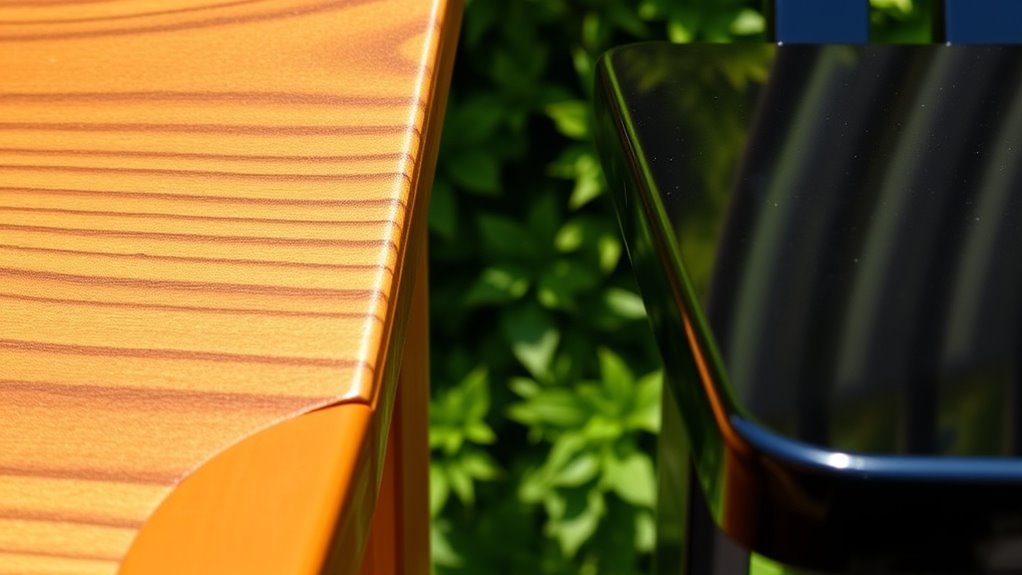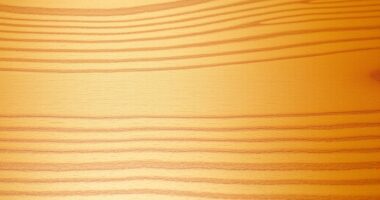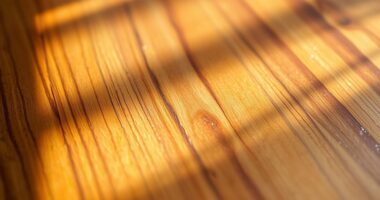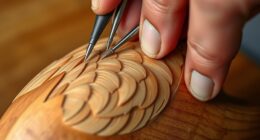When choosing between varnish and lacquer for outdoor furniture, consider durability and environmental resistance. Varnish offers a thicker, flexible coating that withstands UV rays, moisture, and temperature changes, making it ideal for outdoor use. Lacquer provides a high-gloss finish but is less durable outdoors, susceptible to moisture and UV damage. To make the best choice, understanding these differences can help you achieve a long-lasting, attractive finish—more details await to help you decide.
Key Takeaways
- Varnish is more durable and weather-resistant, making it ideal for outdoor furniture, while lacquer is better suited for indoor or protected items.
- Varnish forms a flexible, thick film that withstands UV rays, moisture, and temperature changes, unlike lacquer which is more susceptible to weather damage.
- Application of varnish typically involves multiple coats with sanding in between, whereas lacquer dries quickly and requires fewer coats.
- Lacquer offers a high-gloss, smooth finish quickly, but its outdoor durability is limited due to susceptibility to moisture and UV exposure.
- Choose varnish for long-lasting outdoor furniture protection, and use lacquer for indoor applications or items in sheltered environments.

When choosing between varnishing and lacquering for your project, understanding their differences is vital. Both finishes serve to protect and enhance your outdoor furniture, but they differ considerably in durability factors and application techniques. Varnish is typically made from oil, resin, or alkyds combined with a solvent, creating a thick, protective coating. Lacquer, on the other hand, is a fast-drying finish made from nitrocellulose or acrylic resins dissolved in lacquer thinner. Recognizing how these characteristics influence their performance helps you select the right option for your outdoor furniture needs.
Choosing between varnish and lacquer depends on durability needs and application preferences.
Durability factors play a key role in making your decision. Varnish tends to be more resistant to moisture, UV rays, and temperature fluctuations, making it ideal for outdoor settings where furniture faces the elements. Its thicker, more flexible film can withstand expansion and contraction caused by weather changes without cracking or peeling. Lacquer, while providing a high-gloss, smooth finish, generally offers less durability outdoors. It’s more susceptible to damage from moisture and UV exposure, which can lead to cracking, peeling, or cloudiness over time. However, lacquer can be a good choice for indoor furniture or items that don’t face harsh weather conditions, thanks to its quick-drying nature and attractive finish.
Application techniques differ between the two finishes and impact their effectiveness. Varnish is usually applied with a brush, roller, or sprayer, and requires multiple coats for maximum protection. You’ll need to sand lightly between coats to guarantee proper adhesion and a smooth surface. Proper application is vital for durability, as uneven coats or missed spots can compromise the finish’s longevity. Lacquer is often sprayed on for a smooth, glossy appearance, although it can also be brushed or wiped on in some cases. Because it dries quickly, you must work efficiently and apply thin, even coats to avoid drips and uneven coverage. Sanding between coats is also recommended for lacquer, but it’s generally less labor-intensive due to its fast-drying properties.
Ultimately, your choice depends on your priorities. If you want a finish that maximizes outdoor durability with a robust protective layer, varnish is the better option. If you’re after a quick-drying, high-gloss look and your furniture isn’t exposed to severe weather, lacquer might suit your project better. Knowing the key durability factors and mastering proper application techniques ensures your outdoor furniture remains beautiful and protected for years to come.
Frequently Asked Questions
Which Finish Is More Environmentally Friendly for Outdoor Furniture?
You should choose eco-friendly options like biodegradable finishes for outdoor furniture if you want a more environmentally friendly finish. These options emit fewer volatile organic compounds (VOCs) and break down naturally, reducing environmental impact. Both varnishes and lacquers can be environmentally friendly if they’re labeled as biodegradable or low-VOC. Always check product labels and opt for finishes that prioritize sustainability to protect your outdoor space and the planet.
How Do Weather Conditions Affect the Durability of Varnish and Lacquer?
Weather conditions can dramatically impact your furniture’s finish. You might not realize, but UV degradation weakens lacquer faster in intense sunlight, while varnish’s moisture resistance varies with humidity levels. Rain, snow, or high humidity can cause peeling or cracking if the protection isn’t robust. To guarantee durability, choose a finish that withstands your climate’s challenges, or prepare for frequent touch-ups to keep your outdoor furniture looking its best.
Can Varnish or Lacquer Be Applied Over Existing Finishes?
Yes, you can apply varnish or lacquer over existing finishes if they’re compatible. First, check the application compatibility by reading product labels. Then, thoroughly prepare the surface by cleaning, sanding, and removing any peeling or damaged areas. This guarantees proper adhesion and a smooth finish. Skipping surface preparation can cause peeling or uneven coverage, so take your time to prep properly before applying a new coat over the old finish.
What Is the Typical Maintenance Required for Each Finish?
For varnish, you should clean your furniture regularly, about every few months, to remove dirt and prevent buildup. Reapplication is typically needed every 2-3 years, especially if the finish begins to crack or peel. Lacquer requires less frequent maintenance; clean it monthly and reapply every 1-2 years when it starts to dull or shows signs of wear. Proper upkeep keeps your outdoor furniture protected and looking great.
Are There Specific Colors or Tints Available for Varnish or Lacquer?
Yes, you can find a range of color options and tint variations for both varnish and lacquer. You might prefer clear finishes to showcase natural wood grain, or choose tinted versions to add color or UV protection. Keep in mind that some tints may alter the appearance over time, so select a hue that complements your outdoor furniture’s style. Always check with suppliers for available color choices to match your desired look.
Conclusion
Choosing between varnish and lacquer depends on your needs. Varnish offers durability and weather resistance, perfect if you want long-lasting protection outdoors. Lacquer, on the other hand, provides a sleek, glossy finish that highlights your furniture’s beauty but may need more maintenance. Think of varnish as a sturdy shield and lacquer as a stylish coat. Your choice shapes not just the look but how well your outdoor furniture stands up to the elements.









